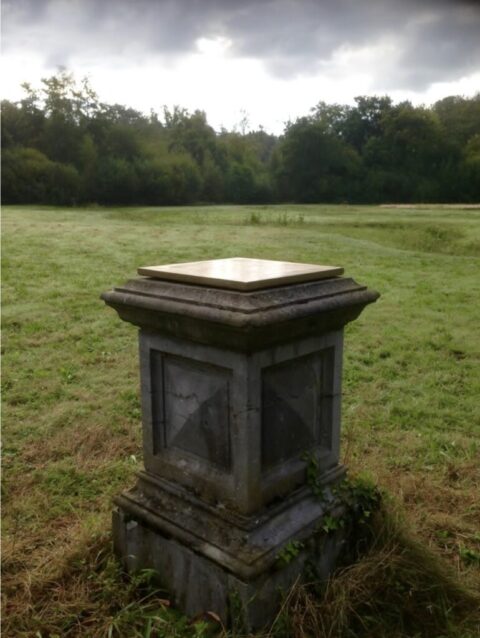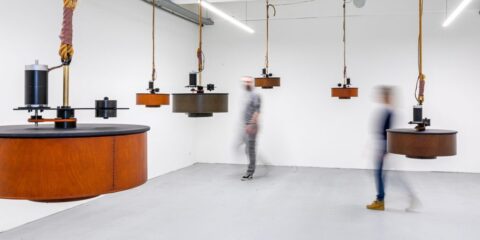In this final episode of the podcast series De Octopus,Eef Schoolmeesters speaks with artists Thomas Bakker and Mariska de Groot in Brussels about the choices and actions needed to achieve a specific outcome in the creation of an artwork.
How do decisions and compromises within the production process relate to the realisation of the work? What kind of space and conditions do they need to work effectively? What responses does the work evoke once presented – and is that the end of the (creative) process?
Listen to this episode on SoundCloud or Spotify
The conversation took place at Villa Empain, where Thomas Bakker was in residence at the time. The sensitivity of the historic building and the unique materials woven into its architecture sparked his interest in working there. For this residency, he did not bring any completed work; instead, he brought elements or materials still in development – pieces to experiment and puzzle with. Ideally, Thomas considers the exhibition space itself to be an extension of the studio, allowing concept, material, and location to interact directly. Mariska de Groot often follows a more ‘linear’ process in the development of her work. It typically begins with a desire to scale up a small technique (such as the vibration of a spinning top), requiring research, technical knowledge, and a production phase – until everything comes together during installation, often with a hint of magic. The musical compositions that characterise her work are often developed at the very end. Although her process follows a fairly specific path, she, like Thomas, emphasises the importance of ‘lazing around’ – giving yourself the freedom to change direction.
Thomas Bakker has a broad artistic practice. In addition to making visual work, he also organises exhibitions with and for other artists, such as the initiative Parkplatz. Thomas is co-founder of the exhibition space Club Solo in Breda and teaches in the Master’s programme Institute of Visual Cultures at St. Joost School of Art & Design. His visual work often consists of (temporary) site-specific installations, and is strongly influenced by film and architecture. Thomas works with photographs, slides, 16mm film fragments, everyday objects, and architectural environments.

Wolfslaer Park Breda 2020 – Weight Works/var.I / bronze / 89.7 kg / 59 x 59 x 3 cm / based on personal weight for pedestal
Mariska de Groot
Mariska de Groot is part of the arts platform iii in Den Haag, which supports interdisciplinary practices that move between art, science, and technology – themes that are also central to her individual work. In her visual practice, Mariska explores the phenomenon of ‘optical sound’, or the audibility of moving images. She investigates this through performance and installation, creating compositions using analogue light-to-sound instruments. Her work often incorporates the history of optical sound and the technological evolution of media. The result is a phenomenological experience of light, sound, movement, and space.

Installation / sound sculpture BROM 2021 (photo: Mark Arends) – motorised instruments suspended from the ceiling create a spatial sound sculpture
